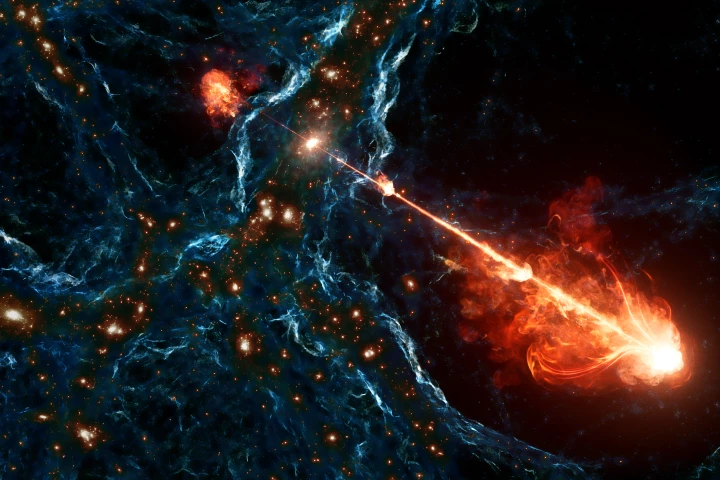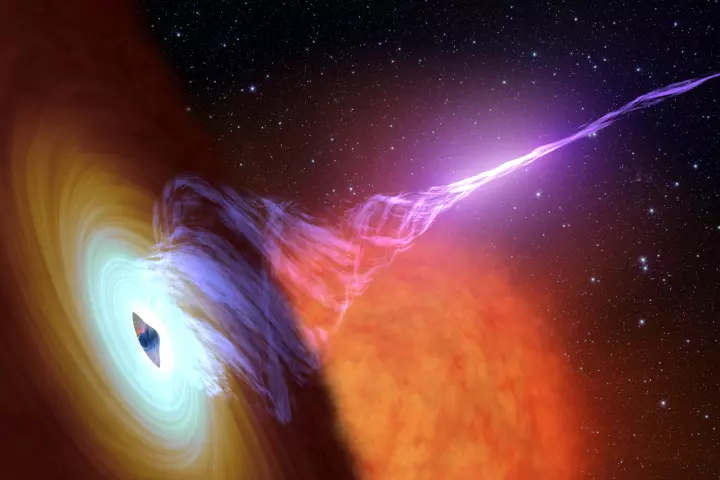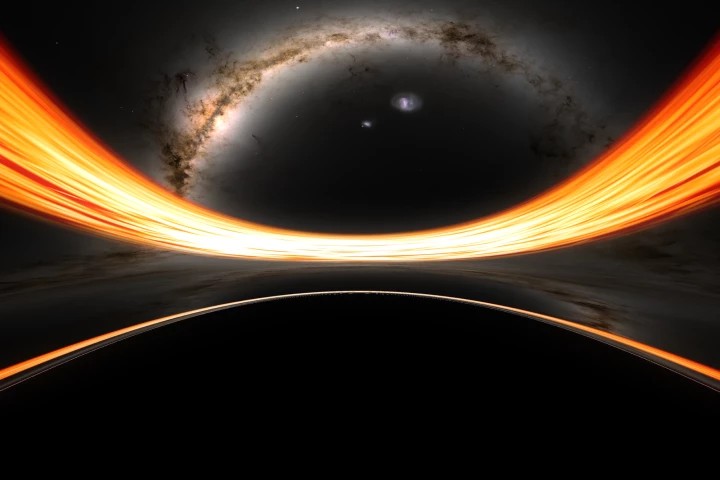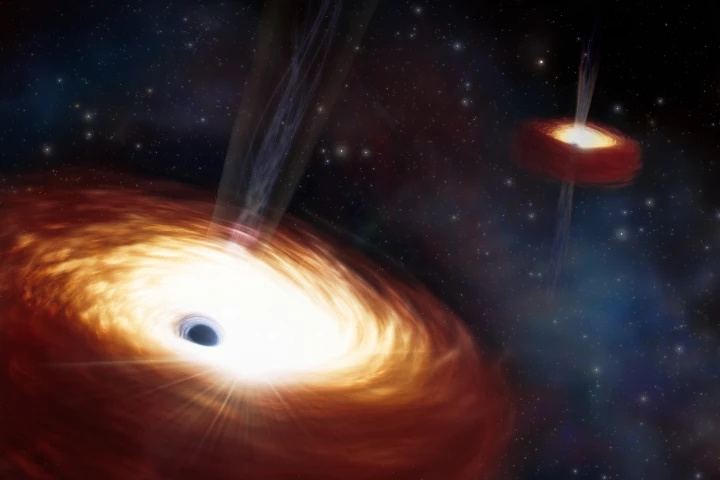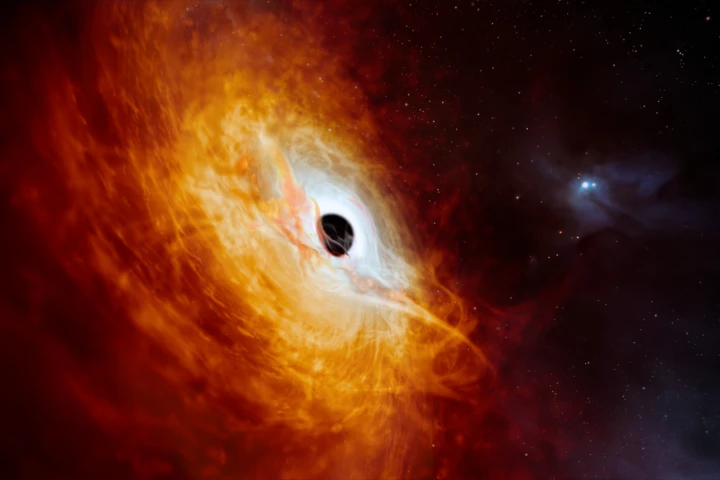Supermassive black hole
-
Astronomers have spotted an absolutely colossal cosmic chimney that stretches as far as 140 Milky Ways lined up side by side. These jumbo jets are being blasted from a supermassive black hole.
-
Astronomers have watched a supermassive black hole take two bites of a star, and predicted when it might go back for a third. If it does, this should make for an intriguing stellar light show.
-
Supermassive black holes have been known to belch gigantic beams of plasma into space – and now scientists have managed to recreate these fireballs in a lab at CERN.
-
What would it look like to fall into a black hole? It’s a question basically everyone has pondered, and now NASA has finally given us a first-person view of the experience with scientifically-accurate visualizations produced by a supercomputer.
-
We’ve all regretted taking too long to make a move, but at least it wasn't 3 billion years. That’s how long the sexual tension has been building between two slow-dancing supermassive black holes, whose eventual congress could rock the entire universe.
-
The brightest object in the known universe has just been found. It's a supermassive black hole with the mass of 17 billion Suns, and it swallows another Suns’ worth of material every day, making it also the fastest-growing black hole ever found.
-
A supermassive monster lurks at the center of our galaxy, and astronomers have now discovered that it’s spinning so fast it’s warping the very fabric of spacetime into a football shape.
-
Astronomers have mapped out half the universe in X-ray light, using a space telescope called eROSITA. The new map, which contains almost a million X-ray sources, is the basis of dozens of new scientific papers, with many more to come.
-
Astronomers have discovered the most distant – and therefore earliest – known black hole. Hiding in a galaxy called GN-z11, this black hole is bigger than should be possible given the age of the universe.
-
You’d never notice one star in the galaxy that wasn’t from around here. Astronomers have now found that a star right near the supermassive black hole at the center of the Milky Way likely originated in a smaller galaxy that ours devoured.
-
Astronomers have discovered evidence of a theorized type of black hole lurking in the distant universe. Known as an “Outsize Black Hole,” this object could help explain some fundamental cosmic mysteries, including how supermassive monsters form.
-
The very fabric of spacetime is constantly warping on unimaginably tiny scales, as ripples from past cataclysms wash over us. Astrophysicists have now detected a background sea of gravitational waves, using a galaxy-scale detector of dead stars.
Load More
